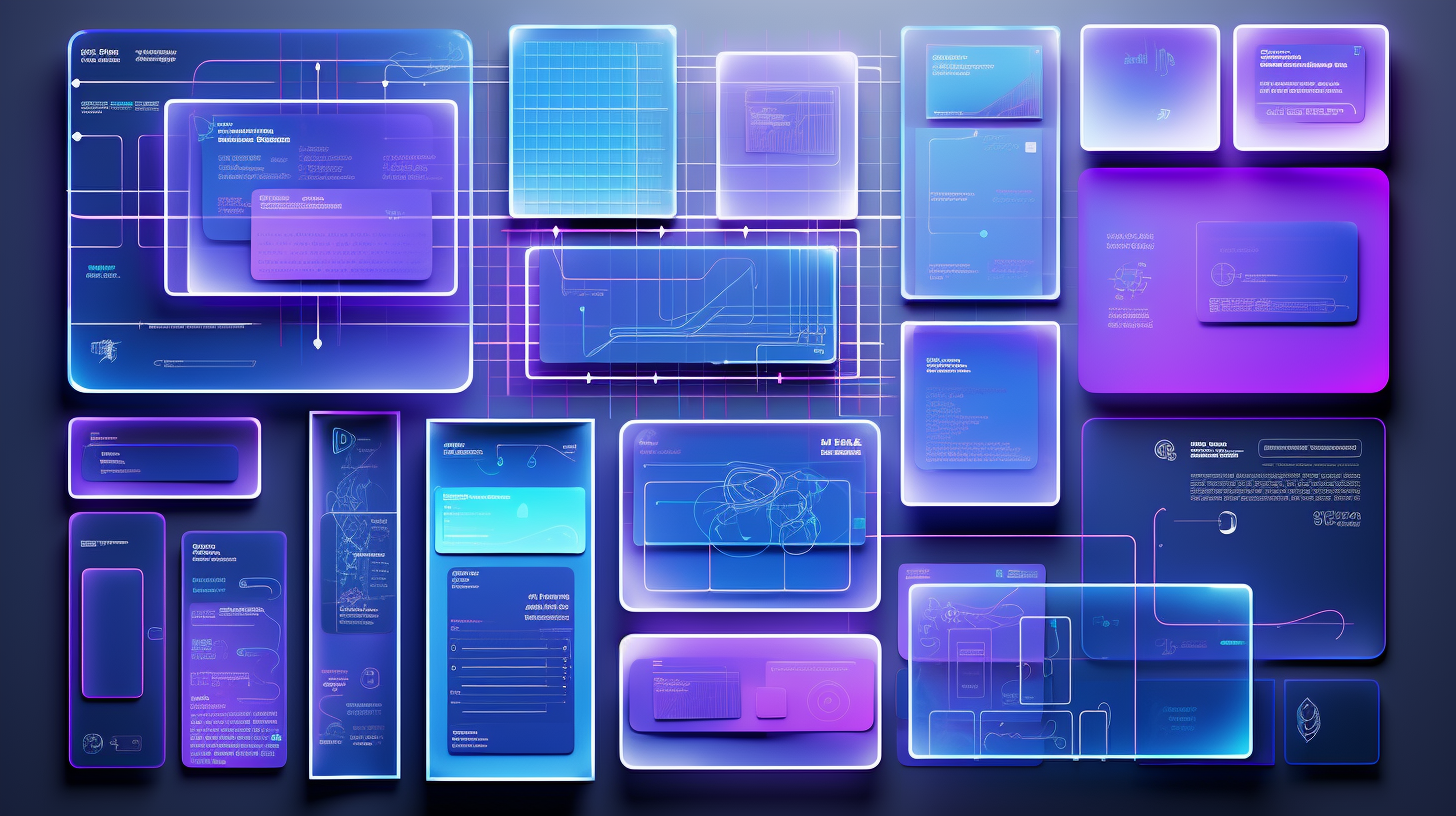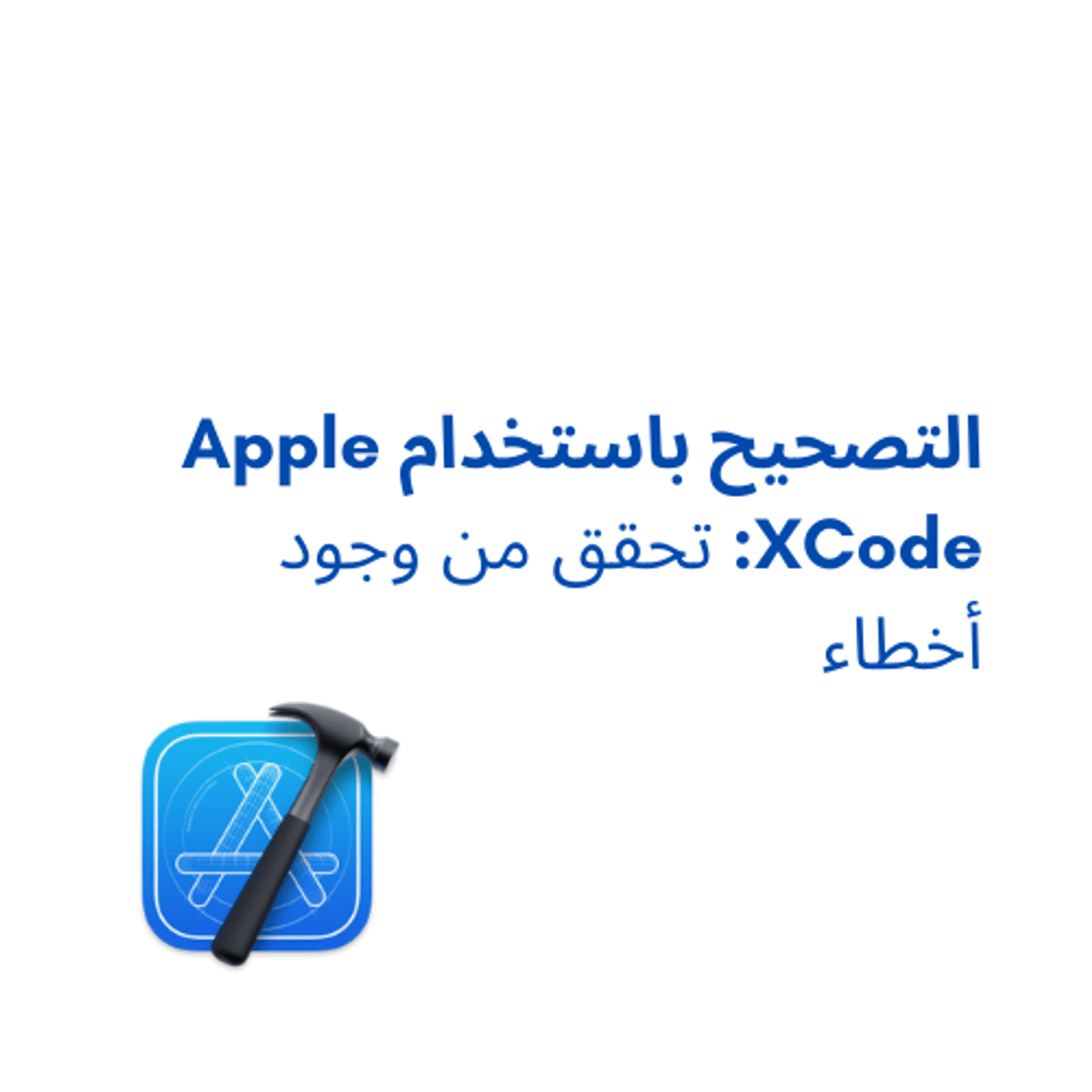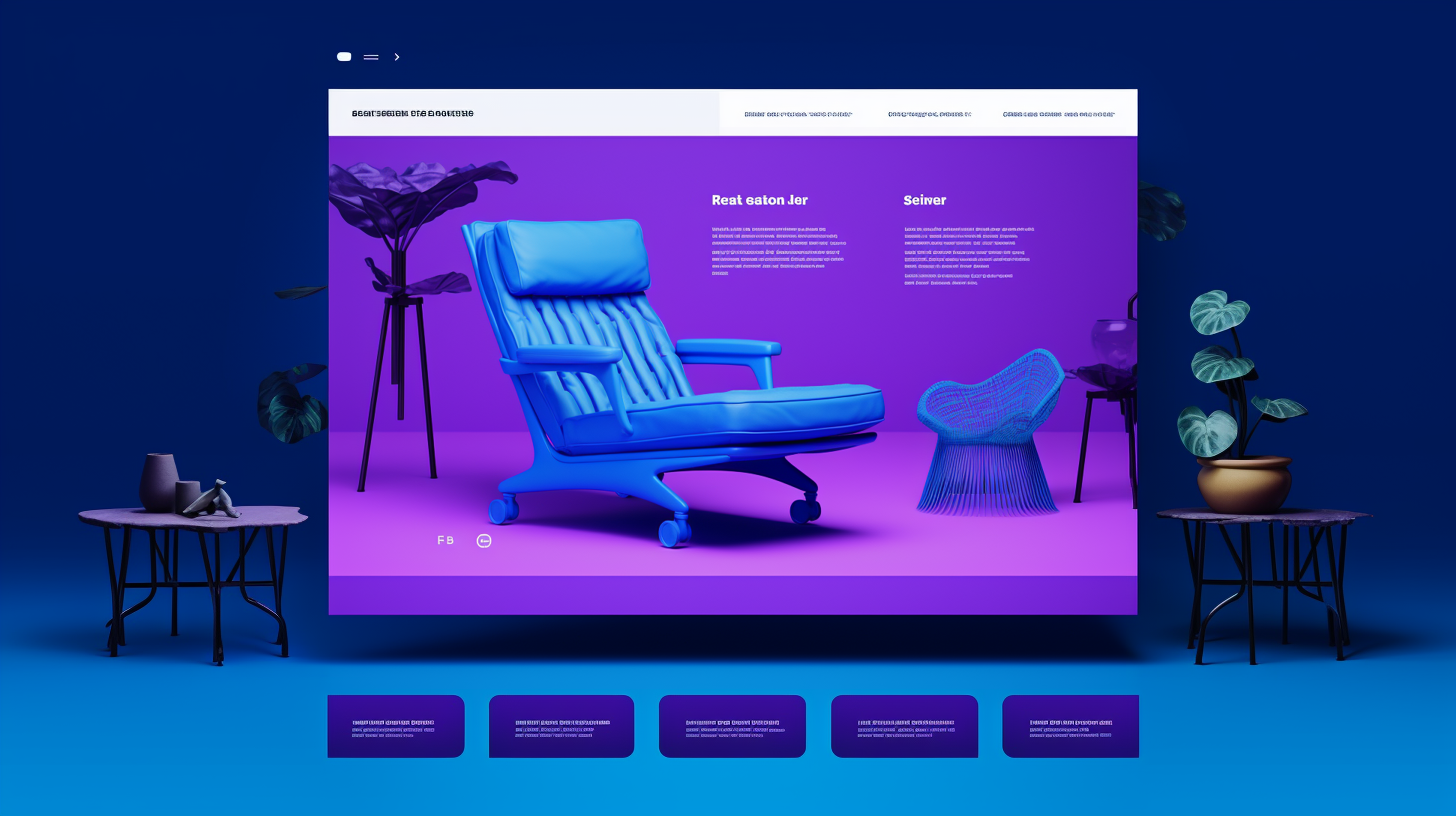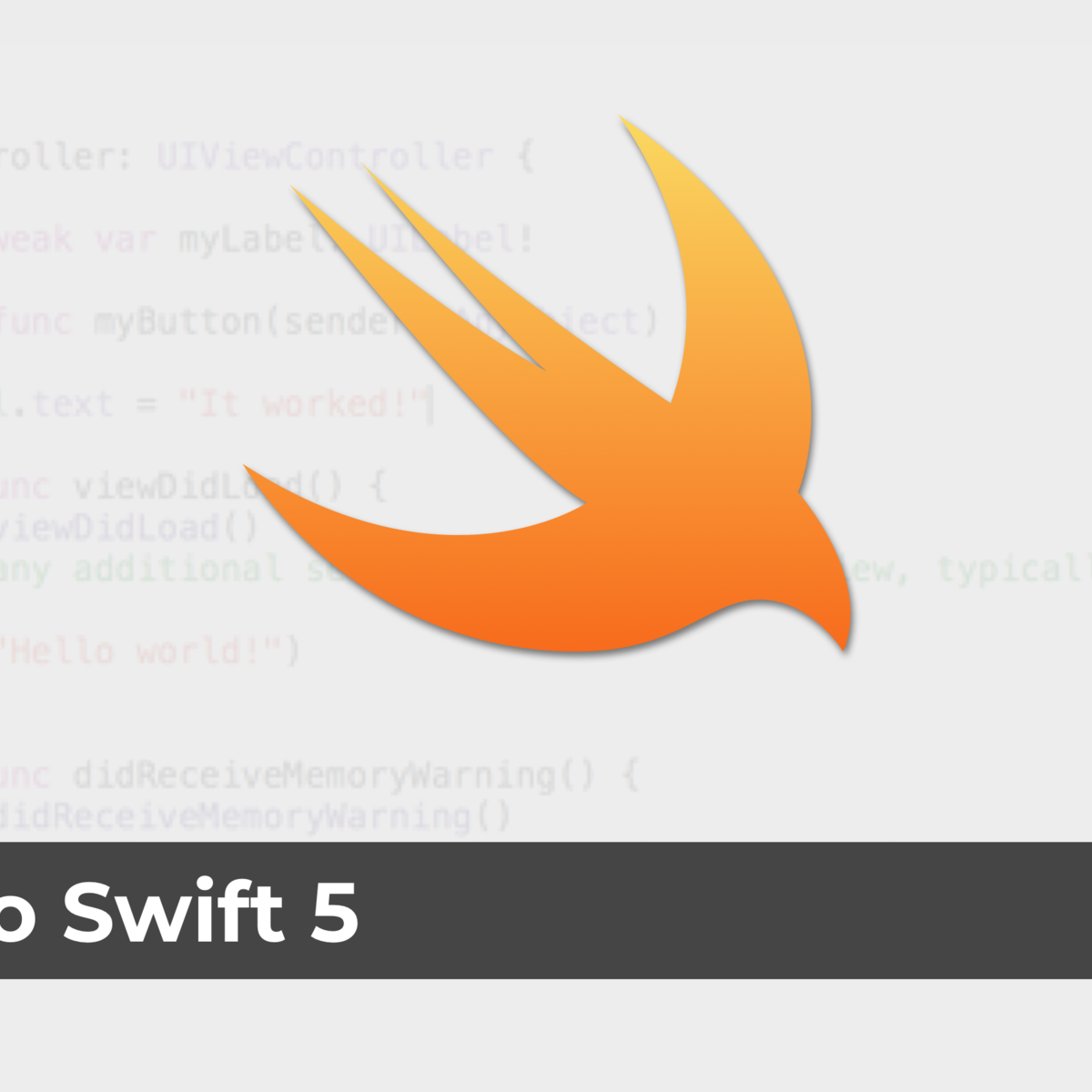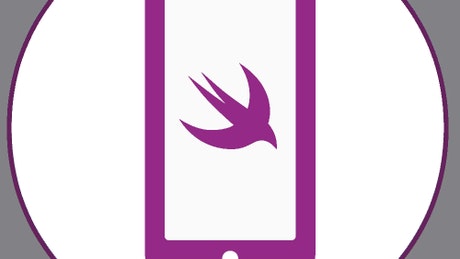iOS Developer
iOS Developer: A Career Exploration
An iOS Developer is a specialized software engineer who designs, develops, and maintains applications specifically for Apple's mobile operating system, iOS. These applications run on devices like the iPhone and iPad, forming a significant part of the modern digital landscape. The role involves translating ideas and designs into functional, user-friendly mobile experiences within the Apple ecosystem.
Working as an iOS Developer can be intellectually stimulating and creatively fulfilling. You'll often be at the forefront of mobile technology, utilizing cutting-edge tools and frameworks provided by Apple. The process involves problem-solving, collaborating with designers and product managers, and seeing your creations used by potentially millions of people worldwide through the App Store.
Core Responsibilities of an iOS Developer
Understanding the day-to-day work of an iOS Developer is crucial for anyone considering this career path. It encompasses a range of technical and collaborative tasks aimed at delivering high-quality mobile applications.
From Concept to Deployment: The App Lifecycle
An iOS Developer is involved throughout the entire lifecycle of an application. This journey begins with understanding requirements, often collaborating with product managers and designers to refine the concept. It then moves to development, where the developer writes code using languages like Swift or Objective-C.
Testing is a critical phase, involving debugging and ensuring the app performs well across different iOS devices and versions. Finally, the developer prepares the app for submission to the App Store, adhering to Apple's guidelines, and manages the deployment process.
This end-to-end involvement requires a blend of technical skill, attention to detail, and project management awareness. Successfully navigating this lifecycle is fundamental to the role.
Collaboration is Key: Working with Teams
iOS Developers rarely work in isolation. They are typically part of a larger team, collaborating closely with User Interface (UI) and User Experience (UX) designers to implement visually appealing and intuitive interfaces. This involves understanding design mockups, providing feedback on feasibility, and translating design specifications into functional code.
Interaction with product teams, including product managers and business analysts, is also common. Developers need to understand the product vision, contribute technical insights, and sometimes participate in planning and feature prioritization.
Effective communication and teamwork skills are therefore essential. The ability to understand different perspectives and work towards a common goal is as important as technical proficiency.
To better understand the design aspect of collaboration, consider exploring mobile design principles.
Ensuring Quality: Optimization and Debugging
Building an app isn't just about making it work; it's about making it work well. Performance optimization is a core responsibility, ensuring the app is fast, responsive, and efficient in its use of device resources like battery and memory.
Debugging is another constant task. Developers spend significant time identifying and fixing bugs, whether discovered during development, testing, or after release based on user feedback or crash reports. This requires strong analytical and problem-solving skills.
Mastering debugging tools provided by Apple, like Xcode's debugger, and understanding performance analysis techniques are vital for delivering a high-quality user experience.
Understanding how to test your code effectively is crucial for minimizing bugs.
Keeping Up: Maintenance and Updates
The work doesn't end once an app is launched. iOS Developers are responsible for ongoing maintenance, which includes fixing newly discovered bugs, updating the app for new versions of iOS and new Apple devices, and ensuring compatibility.
Developers also work on subsequent versions of the app, adding new features, improving existing ones, and responding to user feedback or changing market demands. This iterative process requires continuous learning and adaptation.
Staying updated with Apple's latest guidelines, technologies, and platform changes is necessary to keep applications relevant and functional over time.
Essential Technical Skills
A successful iOS Developer possesses a strong foundation in specific programming languages, frameworks, and tools integral to the Apple ecosystem. Mastering these technical skills is fundamental to building robust and efficient iOS applications.
Mastering the Language: Swift
Swift is Apple's modern, powerful, and intuitive programming language, and proficiency in it is essential for current iOS development. It was designed for safety, speed, and expressiveness. Developers need a solid grasp of Swift's syntax, features like optionals, generics, protocols, and memory management concepts (like ARC).
Understanding Swift goes beyond just writing code; it involves writing *idiomatic* Swift – code that is clear, concise, and leverages the language's features effectively. Continuous learning is key, as Swift evolves with regular updates.
While Objective-C was the primary language before Swift, some legacy projects still use it, making familiarity potentially beneficial, though Swift is the primary focus for new development.
These courses provide a solid foundation in Swift programming, starting from the basics and moving towards more advanced concepts.
For those needing to work with older codebases or understand the transition, learning Objective-C can be helpful.
Building Interfaces: UIKit and SwiftUI
Creating the user interface (UI) is a major part of iOS development. Apple provides two primary frameworks for this: UIKit and SwiftUI. UIKit is the older, more established framework, offering imperative control over UI elements. It's widely used in existing applications and provides deep customization options.
SwiftUI is Apple's newer, declarative framework. It allows developers to define the UI based on state, simplifying development for many common scenarios and enabling easier cross-platform development within Apple's ecosystem (iOS, macOS, watchOS). Understanding both frameworks is often necessary, as many projects involve migrating from UIKit to SwiftUI or using them together.
Knowing how to create responsive layouts that adapt to different screen sizes (using tools like Auto Layout in UIKit or SwiftUI's adaptive system) is crucial.
These courses cover the essentials of building user interfaces with both UIKit and the modern SwiftUI framework.
These resources focus specifically on SwiftUI, Apple's modern declarative UI framework.
Managing Data: Persistence with Core Data and Realm
Most applications need to store data locally on the device. iOS developers must be proficient in data persistence techniques. Apple's Core Data framework is a common solution for managing the app's model layer, handling object graphs, persistence, and querying.
While Core Data is powerful, it can have a steep learning curve. Alternatives like Realm, a mobile database designed for simplicity and performance, are also popular. Understanding database concepts, data modeling, and how to efficiently store and retrieve data is key.
Choosing the right persistence solution depends on the app's complexity and specific data requirements.
These courses and books delve into storing and managing data within iOS applications using frameworks like Core Data.
Connecting to the World: RESTful APIs
Modern apps rarely exist in isolation; they often need to communicate with backend services to fetch or send data. Understanding how to work with RESTful APIs is crucial. This involves making network requests, handling responses (often in JSON format), and managing asynchronous operations.
Developers need to be familiar with networking libraries and techniques within the iOS SDK (like URLSession) or popular third-party libraries. Proper error handling and managing network states (like loading indicators or offline support) are also important aspects.
Securely handling data transmitted over the network is another vital consideration in API integration.
These courses cover networking concepts essential for connecting iOS apps to external data sources and services.
Collaboration and History: Version Control with Git
Version control systems are indispensable in software development for tracking changes, collaborating with others, and managing different versions of the codebase. Git is the industry standard, and proficiency with it is expected.
iOS Developers use Git for tasks like committing changes, creating branches for new features or bug fixes, merging code from different team members, and reverting to previous versions if necessary. Familiarity with platforms like GitHub, GitLab, or Bitbucket, which host Git repositories, is also essential.
A solid understanding of Git workflows helps maintain code integrity and facilitates smooth collaboration within development teams.
Formal Education Pathways
While not the only route, formal education provides a structured path into iOS development, often covering foundational computer science principles alongside specialized mobile development skills.
The Role of a Computer Science Degree
A Bachelor's degree in Computer Science or a related field is a common starting point for many software developers, including those specializing in iOS. These programs provide a broad understanding of algorithms, data structures, operating systems, and software engineering principles.
This theoretical foundation is valuable for tackling complex problems and understanding the underlying technologies in mobile development. While not strictly teaching iOS development, the problem-solving and analytical skills gained are highly transferable.
Many employers view a relevant degree favorably, especially for entry-level positions, as it demonstrates a commitment to the field and a baseline level of technical knowledge.
Specialized Mobile Development Programs
Beyond general computer science degrees, some universities and colleges offer programs or tracks specifically focused on mobile application development. These may include dedicated courses on iOS development using Swift and relevant frameworks.
Such specialized programs offer a more direct path, combining theoretical foundations with practical, platform-specific skills. They often involve hands-on projects tailored to mobile app creation.
Investigating curriculum details is important to ensure the program covers modern iOS development practices and tools.
Mathematics and Logic Foundations
While advanced calculus might not be a daily requirement for most iOS developers, a solid foundation in mathematics, particularly discrete math and logic, is beneficial. Understanding algorithms often involves mathematical thinking.
Logical reasoning is fundamental to programming – structuring code, debugging issues, and designing application flow all rely heavily on logical thought processes. Formal education often emphasizes these skills.
For developers interested in specialized areas like game development, graphics, or machine learning on iOS, a stronger mathematical background becomes even more important.
Showcasing Skills: Capstone Projects and Theses
Many formal education programs culminate in a capstone project or thesis. These provide an excellent opportunity for students to apply their learning to a substantial project, often involving the development of a complete application.
An iOS-focused capstone project can serve as a significant portfolio piece, demonstrating practical skills to potential employers. It showcases the ability to manage a project from conception to completion.
Presenting these projects effectively, highlighting the technical challenges overcome and the features implemented, can be a strong asset during job applications.
This course represents the kind of capstone project often found in specialized programs.
Deeper Dive: Research-Focused Graduate Programs
For those interested in pushing the boundaries of mobile technology or pursuing academic or research careers, graduate programs (Master's or Ph.D.) offer opportunities for deeper specialization. Research areas might include mobile human-computer interaction, mobile security, performance optimization, or novel uses of mobile sensors.
A graduate degree can lead to roles in research labs, advanced development teams, or teaching positions. It signifies a high level of expertise and the ability to conduct independent research.
These programs are significantly more demanding and research-intensive than undergraduate degrees or specialized training programs.
Alternative Learning Routes
Formal education isn't the only path to becoming an iOS Developer. Many successful developers are self-taught or have transitioned from other fields, leveraging online resources, community support, and hands-on experience.
Learning by Doing: Project-Based Strategies
One of the most effective ways to learn iOS development outside of a formal setting is through project-based learning. Start with small, achievable projects and gradually increase complexity as skills grow. Building actual apps, even simple ones, solidifies understanding far better than just reading theory.
Ideas can range from basic utility apps (like a calculator or to-do list) to clones of popular app features. The key is to consistently apply learned concepts in a practical context. OpenCourser's extensive catalog can help find courses that emphasize project work.
Focusing on finishing projects, even if imperfect, builds momentum and provides tangible results for a portfolio. Platforms like OpenCourser's programming section offer numerous courses to guide these projects.
These courses emphasize building complete applications, offering excellent project-based learning opportunities.
Engaging with the Code: Open Source Contributions
Contributing to open-source iOS projects is an excellent way to learn from experienced developers, understand real-world codebases, and gain visibility. It involves reading code, fixing bugs, or adding features to existing projects hosted on platforms like GitHub.
Even small contributions demonstrate initiative, collaboration skills, and technical ability. It's a practical way to learn coding standards, testing practices, and Git workflows used in professional environments.
Finding beginner-friendly issues in popular iOS libraries or frameworks can be a good starting point. This experience is highly valued by many employers.
Connecting with Peers: Developer Community Engagement
The iOS developer community is active and supportive. Engaging with this community through online forums (like Stack Overflow, Reddit), local meetups, or conferences provides invaluable learning opportunities and networking connections.
Asking questions, sharing knowledge, and discussing challenges with peers can accelerate learning and provide different perspectives. Following influential iOS developers and blogs keeps you updated on best practices and emerging trends.
Building relationships within the community can also lead to mentorship opportunities or job leads down the line.
Showcasing Your Work: Portfolio Development
For self-taught developers or career changers, a strong portfolio is essential. It serves as concrete evidence of your skills and experience, often carrying more weight than credentials alone. The portfolio should showcase a variety of projects, highlighting different technical skills.
Include personal projects, open-source contributions, or even apps published on the App Store. For each project, clearly describe the problem it solves, the technologies used, and your specific contributions. A well-documented GitHub profile is also a crucial part of a modern developer's portfolio.
Continuously refining and adding to your portfolio as you learn demonstrates growth and dedication to the craft. OpenCourser's Learner's Guide may offer tips on building a technical portfolio.
Credentials and Validation: The Role of Certifications
While hands-on experience and a strong portfolio are paramount, certifications can sometimes supplement a resume, especially for those without formal degrees. Some organizations offer certifications related to Swift or iOS development.
However, the value of certifications in the iOS field is often debated. They can demonstrate foundational knowledge but rarely substitute for demonstrable practical skills shown through projects. Consider them as potential complements, not replacements, for portfolio work.
Focus first on building and showcasing practical skills; pursue certifications strategically if they align with specific career goals or employer requirements.
Many online courses offer certificates upon completion, which can be added to your profile.
Career Progression for iOS Developers
A career in iOS development offers various paths for growth, from technical specialization to leadership roles. Understanding these potential trajectories helps in long-term career planning.
Starting Out: Entry-Level and Junior Roles
Most developers begin in junior or entry-level positions. Responsibilities typically involve working on smaller features, fixing bugs under supervision, writing tests, and learning the team's codebase and development processes. The focus is on building foundational skills and gaining practical experience.
Mentorship from senior developers is common at this stage. Strong learning ability, enthusiasm, and a good grasp of core concepts (Swift, basic UI frameworks) are key requirements.
Transitioning from learning to a first job often requires persistence and a portfolio demonstrating potential, even if prior professional experience is lacking.
These courses are designed for beginners aiming for their first role.
Gaining Expertise: Mid-Level and Senior Roles
With a few years of experience, developers move into mid-level and then senior roles. Responsibilities expand to include designing and implementing larger features, making architectural decisions for components, mentoring junior developers, and taking ownership of significant parts of the application.
Senior developers possess deep technical expertise, understand trade-offs in design choices, and can troubleshoot complex issues independently. They often contribute to improving development processes and code quality standards.
Strong problem-solving skills, effective communication, and a proactive approach are hallmarks of senior developers.
These intermediate and advanced courses help build the deeper expertise needed for senior roles.
These books cover intermediate to advanced topics relevant for progressing developers.
Guiding the Vision: Technical Leadership and Architecture
Experienced senior developers may progress into technical leadership (Tech Lead) or architectural roles. Tech Leads guide a team's technical direction, make high-level design decisions, resolve technical roadblocks, and mentor other engineers.
Architects focus on the overall structure and design of the application or even multiple applications within an organization. They define technical standards, choose technologies, and ensure the system is scalable, maintainable, and meets business requirements.
These roles require not only deep technical knowledge but also strong leadership, communication, and strategic thinking skills.
Moving Sideways: Management and Other Transitions
Another path for senior developers is transitioning into engineering management. This involves shifting focus from hands-on coding to managing people, guiding careers, project planning, and coordinating team efforts. It requires strong interpersonal and organizational skills.
Some iOS developers might also transition into related roles like Product Management, leveraging their technical understanding of the platform, or into specialized areas like Developer Relations or Technical Training.
These transitions often depend on individual interests and strengths beyond pure coding.
Going Independent: Freelance and Consulting
Experienced iOS developers can pursue freelance or consulting opportunities. Freelancers typically work on specific projects for various clients, offering flexibility but requiring business development and self-management skills.
Consultants provide expert advice and solutions to businesses, often tackling complex technical challenges or helping companies adopt best practices in iOS development. This path demands strong expertise, communication skills, and often a specialized niche.
Both routes offer autonomy but come with the responsibilities of running a business.
Focusing Expertise: Industry Specialization
iOS developers can also specialize within specific industries, such as FinTech, Healthcare, E-commerce, Gaming, or Education. Each industry often has unique requirements, regulations, and technical challenges.
Developing deep domain knowledge in a particular sector can make a developer highly valuable. For example, a developer specializing in healthcare apps might need expertise in data privacy regulations like HIPAA.
This specialization can lead to niche roles and potentially higher compensation due to the specific expertise required.
Developing games for iOS is one popular specialization.
iOS Developer Job Market Analysis
Understanding the job market is essential for anyone considering or pursuing a career as an iOS Developer. This includes looking at demand, salary expectations, and factors influencing employment opportunities.
Demand and Growth Outlook
The demand for skilled software developers, including those specializing in iOS, remains strong. With millions of apps on the App Store and Apple devices being widely used globally, businesses across various sectors need developers to build, maintain, and innovate their mobile presence.
Data from the U.S. Bureau of Labor Statistics projects significant growth for software developers overall. According to the BLS Occupational Outlook Handbook, employment for software developers, quality assurance analysts, and testers is projected to grow 17 percent from 2023 to 2033, much faster than the average for all occupations. This translates to numerous job openings each year.
While the market can fluctuate, the fundamental need for mobile applications, particularly within the large iOS ecosystem, suggests continued demand for developers with the right skills. Tech, e-commerce, finance, and healthcare are often cited as industries with significant hiring activity for iOS roles.
Salary Benchmarks and Compensation
iOS development is generally a well-compensated field. Salaries vary based on factors like experience level, geographic location, company size, and specific skills. Entry-level positions offer competitive starting salaries, with significant increases expected as developers gain experience and move into senior roles.
Resources like Glassdoor, Payscale, and specialized salary reports can provide benchmarks. For example, Coursera reports an average US salary of $132,000 as of late 2024, though this number fluctuates. Salary guides from recruiting firms like Robert Half also offer detailed breakdowns by role and location, helping set realistic expectations.
Compensation often includes not just base salary but also bonuses, stock options (especially in startups and large tech companies), and benefits packages. Negotiation skills and understanding market rates are important for maximizing earning potential.
Impact of Cross-Platform Frameworks
The rise of cross-platform development frameworks like React Native and Flutter presents an interesting dynamic. These tools allow developers to write code once and deploy it on both iOS and Android, potentially reducing development costs for some companies.
While these frameworks are popular, especially among startups or for apps where native performance isn't the absolute top priority, native iOS development retains significant advantages. Native apps often offer better performance, tighter integration with device features, and immediate access to the latest iOS updates and APIs.
Many companies, particularly those where the mobile app is core to their business or requires high performance (like complex games or media apps), continue to invest heavily in native iOS development. Some developers also choose to learn both native and cross-platform skills.
The Influence of AI and Automation
Artificial Intelligence (AI) is beginning to influence software development, including iOS app creation. AI-powered tools can assist with tasks like code completion, bug detection, and even generating simple code snippets. This has led to discussions about AI's future impact on developer jobs.
However, most experts believe AI will augment rather than replace developers in the foreseeable future. AI can handle repetitive tasks, freeing up developers to focus on more complex problem-solving, architectural design, and creating innovative user experiences. Understanding how to leverage AI tools may become an increasingly valuable skill.
Furthermore, AI itself is creating new opportunities within iOS development, such as integrating machine learning models directly into apps using frameworks like Core ML for features like image recognition or natural language processing.
Emerging Trends in iOS Development
The field of iOS development is constantly evolving. Staying aware of emerging trends and new technologies introduced by Apple is crucial for long-term career success and building modern, cutting-edge applications.
The Evolution of Swift
Swift, the primary language for iOS development, is under continuous development through the Swift Evolution process. New versions introduce language refinements, performance improvements, and enhanced capabilities, particularly around areas like concurrency (async/await) and memory safety.
Keeping up with Swift updates allows developers to write more efficient, safer, and expressive code. Understanding upcoming language features helps prepare for future development paradigms and leverage the latest tools provided by Apple.
The ongoing focus on improving the developer experience and the language's capabilities means Swift will remain central to iOS development for the foreseeable future.
Immersive Experiences: Augmented Reality (ARKit)
Apple has invested heavily in Augmented Reality (AR) through its ARKit framework. ARKit allows developers to build immersive experiences that blend digital objects and information with the real world, using the device's camera and sensors.
Adoption of AR features is growing in areas like gaming, e-commerce (e.g., virtual furniture placement), education, and industrial applications. Proficiency in ARKit is becoming a valuable skill for developers looking to work on innovative AR-powered applications.
As AR hardware potentially evolves (e.g., smart glasses), expertise in ARKit could become even more critical.
On-Device Intelligence: Core ML Integration
Integrating Machine Learning (ML) models directly into iOS apps is becoming increasingly common, enabled by Apple's Core ML framework. This allows for features like intelligent photo organization, real-time image analysis, predictive text, and personalized recommendations, all processed on the device for speed and privacy.
Developers who understand how to integrate and utilize Core ML models can build significantly smarter and more capable applications. This often involves collaboration with data scientists or ML engineers but requires the iOS developer to handle the integration.
The trend towards on-device AI processing emphasizes the importance of frameworks like Core ML in modern app development.
Prioritizing Users: Privacy-Focused Practices
Privacy is a major focus for Apple and a growing concern for users. iOS development increasingly emphasizes privacy-preserving techniques and adherence to Apple's stringent privacy guidelines (e.g., App Tracking Transparency, location permissions, data minimization).
Developers need to design apps with privacy in mind from the outset, clearly communicating data usage practices to users and implementing features that give users control over their data. Understanding concepts like differential privacy and secure data handling is becoming more important.
Building trust through transparent and respectful privacy practices is essential for app success in the modern ecosystem.
Modern UI: Declarative Programming Shifts
The introduction of SwiftUI marked a significant shift towards declarative programming for UI development on Apple platforms. Instead of manually manipulating UI elements (imperative), developers declare the desired UI state, and the framework handles the updates.
This paradigm shift simplifies many aspects of UI development, improves code readability, and facilitates easier state management. While UIKit remains relevant, proficiency in SwiftUI and the declarative approach is increasingly expected for new development.
Understanding the principles of declarative programming and state management is key to effectively using SwiftUI and similar modern UI frameworks.
Ethical Considerations in iOS Development
Beyond technical skills, responsible iOS development requires awareness of ethical considerations. Developers play a role in shaping user experiences and handling sensitive data, making ethical awareness crucial.
Navigating Data Privacy Regulations
iOS developers must be knowledgeable about data privacy laws like the General Data Protection Regulation (GDPR) in Europe and the California Consumer Privacy Act (CCPA). These regulations impose strict rules on collecting, storing, and processing user data.
Compliance involves understanding consent requirements, data minimization principles, user rights (like data access and deletion), and secure data handling practices. Failure to comply can lead to significant penalties and loss of user trust.
Building privacy-respecting features and ensuring compliance with relevant regulations is an ethical and legal obligation.
Ensuring Access for All: Accessibility
Creating applications that are usable by everyone, including people with disabilities, is an ethical imperative and often a legal requirement. iOS provides robust accessibility features (like VoiceOver, Dynamic Type, Switch Control), and developers have a responsibility to implement them correctly.
This involves designing UIs with accessibility in mind, providing alternative text for images, ensuring proper focus order, and testing with accessibility tools. Building accessible apps broadens the user base and ensures inclusivity.
Prioritizing accessibility from the start of the development process is more efficient and effective than trying to add it later.
Considering the Bigger Picture: Environmental Impact
While often overlooked, software development has an environmental footprint. Energy consumption from data centers hosting backend services and the power usage of devices running apps contribute to this impact.
Developers can contribute positively by writing efficient code that minimizes resource consumption (CPU, battery, network bandwidth). Optimizing app performance not only improves user experience but can also marginally reduce the overall environmental impact associated with device usage.
Considering energy efficiency during development and advocating for greener hosting solutions where applicable are small but meaningful steps.
Fairness in Code: Algorithmic Bias Mitigation
When iOS apps incorporate algorithms, especially those involving machine learning or data analysis, there's a risk of perpetuating or amplifying societal biases. Developers should be aware of potential sources of bias in data and algorithms.
While often the responsibility of data scientists who train models, iOS developers integrating these models should understand the potential implications and participate in testing for fairness and unintended consequences.
Advocating for fairness audits and implementing safeguards within the app to mitigate biased outcomes are important ethical considerations.
User Well-being: Addictive Design Ethics
Mobile applications can be designed in ways that encourage compulsive use, potentially impacting user well-being. Techniques like infinite scrolling, variable rewards (notifications), and social pressure loops can contribute to addictive patterns.
Ethical developers consider the potential impact of their design choices on user habits and mental health. This involves questioning whether features prioritize user value or merely aim to maximize engagement time, sometimes to the user's detriment.
Promoting mindful usage and designing features that respect users' time and attention are increasingly important aspects of responsible app development.
Frequently Asked Questions
Here are answers to some common questions potential iOS developers often ask.
Is a Mac Required for iOS Development?
Yes, historically and practically, a Mac computer running macOS is required for serious iOS development. Apple's primary development tool, Xcode, only runs on macOS. Xcode is essential for writing, compiling, debugging, and submitting iOS apps.
While some workarounds like cloud-based Mac services or virtual machines exist, they often come with limitations, performance issues, or added costs. For a smooth and efficient development workflow, investing in a Mac is generally considered necessary.
This hardware requirement is a significant initial consideration for anyone planning to pursue iOS development professionally.
How Competitive is the Job Market?
The job market for iOS developers is generally considered competitive but also rich with opportunities. Demand remains high due to the prevalence of Apple devices and the continuous need for new and updated apps across various industries.
Competition exists, especially for entry-level positions, as many aspiring developers target this field. Standing out requires a strong portfolio showcasing practical skills, proficiency in modern tools like Swift and SwiftUI, and potentially specialization in areas like AR or ML.
While challenging, those with solid skills, a good portfolio, and persistence often find rewarding opportunities. Networking and continuous learning are key to navigating the competitive landscape.
Interview preparation is crucial in a competitive market.
Can Web Developers Transition Easily?
Web developers possess foundational programming knowledge (logic, data structures) and often experience with APIs, which are transferable skills. However, transitioning to native iOS development requires learning a new language (Swift), different frameworks (UIKit/SwiftUI), and platform-specific concepts.
The UI paradigms and development tools (Xcode vs. web editors/browsers) are distinct. While prior development experience helps, a dedicated learning effort is necessary. It's not an immediate switch but certainly a feasible transition for motivated web developers.
Exploring Computer Science fundamentals on OpenCourser can bridge gaps, and dedicated iOS courses provide the specific knowledge needed.
What's the Future: Swift vs. Kotlin?
Swift is the primary language for iOS development, while Kotlin is the preferred language for modern Android development. Both are modern, powerful languages with similar goals but tailored to their respective platforms.
They are not direct competitors in the sense that one will replace the other across both platforms. Developers typically choose based on the target platform (iOS or Android). Cross-platform tools sometimes allow using languages like Kotlin (Kotlin Multiplatform Mobile) for shared logic, but the UI layer often remains platform-specific (SwiftUI for iOS, Jetpack Compose for Android).
For native iOS development, Swift is the definitive language and its future is tightly integrated with Apple's ecosystem.
How Important Are Design Skills?
While iOS developers are primarily coders, having an eye for design and understanding UI/UX principles is highly beneficial. Developers implement the designs created by UI/UX designers, and understanding design rationale facilitates better collaboration and implementation.
Developers who appreciate good design can often spot potential usability issues or suggest improvements during development. While deep graphic design skills aren't mandatory, familiarity with Apple's Human Interface Guidelines and basic UI/UX best practices is valuable.
In smaller teams or startups, developers might have more direct involvement in design decisions, making these skills even more advantageous.
Are Remote Work Opportunities Available?
Yes, remote work opportunities are quite common for iOS developers, as with many software development roles. The nature of the work allows for flexibility in location, provided reliable internet and communication tools are available.
Many tech companies, from startups to large corporations, offer remote or hybrid work arrangements. Freelance and consulting roles also naturally lend themselves to remote work.
The availability varies by company policy and specific team needs, but overall, iOS development is a field with significant remote work potential.
Embarking on a career as an iOS Developer requires dedication, continuous learning, and a passion for building great mobile experiences. It offers creative challenges, technical depth, and the opportunity to impact users directly through the apps you create. With the right skills and mindset, it can be a rewarding and dynamic career path in the ever-evolving world of technology.




